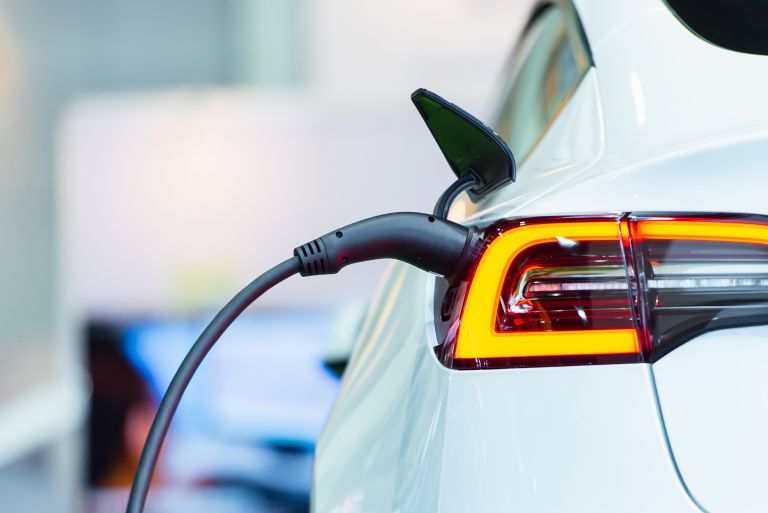Transport
Hunter New England LHD’s fleet of work vehicles are going green.
We will gradually transition our full fleet; firstly, to hybrid and then pure electric models, replacing petrol and diesel vehicles. E-charging stations will be installed on all our sites.
Between 2020 and 2030, we will replace 10 per cent of our fleet with electric models. By 2030, 100 per cent of our fleet will be pure electric vehicles.
Wherever possible, our staff will use video conferencing to reduce unnecessary travel for everyday business, and when they need to drive it will be cleaner than ever.
We’ll also make it easier for staff to carpool or ride their bikes to work. When they travel out of town for work, we’ll find preferred green accommodation and flight providers.
Our targets:
- Zero contribution to carbon emissions from all HNELHD fleet vehicles by 2030
- Support staff and visitors to reduce their transport carbon emissions.
Our measures:
- Reduce CO2 emissions by 10 per cent every year off the 2020 baseline of 3000 tonnes
- Decrease the use of single car travel to HNELHD facilities by 10 per cent by 2030.
The following strategies will be implemented across Hunter New England LHD:
- Implement car-pooling strategies.
- Move HNELHD fleet vehicles to hybrid electric.
- Implement e-charging stations across HNELHD facilities.
- Implement ride-to-work strategy across all major hospitals in the district.
- Reduce staff business travel using technology advancements, including virtual care (telehealth).
- Find and encourage sustainable travel practices, including use of ‘green/eco’ accommodation and flight providers.
| 2018-19 | 2019-20 | 2020-21 | 2021-22 |
| Total vehicles: 1506 Electric: 0% Hybrid: 0.8% | Total vehicles: 1400 Electric: 0% Hybrid: 0.8% | Total vehicles: 1246 Electric: 0% Hybrid: 0.8% | |
| Litres used: 1,275,123 L | Litres used: 1,055,970 L | Litres used: 951,858 L | Litres used: 801,636 L |
| Total emissions: 3183 t C02e | Total emissions: 2641 t C02e | Total emissions: 2382 t C02e | Total emissions: 2012 t C02e |
| Change from 2018-19 -17.02% | Change from 2020-21 -9.81% | Change from 2021-21 -15.51% |
Procurement
Hunter New England LHD will actively go to market in favour of sustainability, innovation, and the promotion of cleaner and socially responsible products and services.
We will base our choice of goods and services on economic, environmental, and social considerations.
Our target:
To procure cleaner and more socially responsible products and services.
Our measures:
- To be ISO 20400:2017 compliant by 2030
ISO 20400:2017 is an international standard that provides guidance to organisations on integrating sustainability within procurement processes.
The following strategies will be implemented across Hunter New England LHD:
- Implement ISO 20400:2017 sustainability procurement standard.
- Complete analysis to find top 10 high impact items (quick wins). Explore ways to introduce more sustainable products.
- Work with HealthShare NSW and John Hunter Hospital (JHH) executive to eliminate 360,000 water bottles from landfill.
- Work with JHH Surgical Services to review all surgical packs and remove redundant items.
- Food Services to phase out single-use plastics across HNELHD facilities.
- Attract suppliers’ interest in recycling programs. Develop relationships and encourage transparency of products’ material specifications.
Infrastructure
All new infrastructure projects across Hunter New England LHD will incorporate sustainability design principles with a 5-star green rating.
Our target:
- Minimise negative environmental impacts of all new HNELHD building projects with sustainable building practices and design.
Our measure:
- All new HNELHD buildings will meet a minimum 5-star green rating.
Our current infrastructure projects will achieve a minimum 5-star green rating, and these include:
- Banksia Unit – Tamworth
- Glenn Innes Hospital
- Gunnedah Hospital
- John Hunter Health and Innovation Precinct (JHHIP)
- Manning – Stage 2
- Moree Hospital
- Muswellbrook – Stage 3
